Keep every part of you away from the mouths of these creatures or you could be in for paralysis, delusions, or an agonizing death.
12 Most Dangerous Animal Bites You Can Get

Housecat
Your kitty’s irritated nip at your hand may leave only a small puncture wound. But that wound can be tricky to properly disinfect and that means the risk of infection is high—as many as 80 percent of cat bites get infected. You could come down with Bartonella henselae, a.k.a cat scratch fever or disease, which, in rare cases, can cause bone infection; or Pasteurella multocida, which can lead to pneumonia.
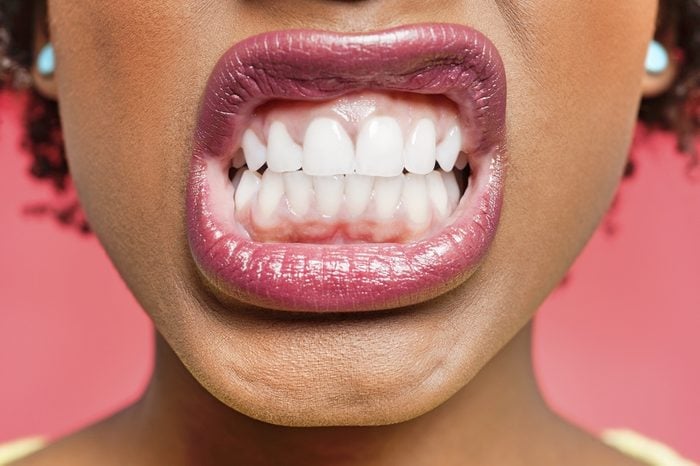
Human
There are many reasons to fear snake bites, but you might not know that the human mouth can be just as dangerous. Over 700 types of bacteria have been found living on our tongues and between our teeth, according to research in the Journal of Clinical Microbiology; the average person has between 20 and 72 of them. Perhaps not surprisingly, then, all kinds of infections can result from a bite from a fellow homo sapiens, including Hepatitis B and C, herpes, tetanus, and HIV. Our advice: Tell your friends to keep their teeth to themselves.
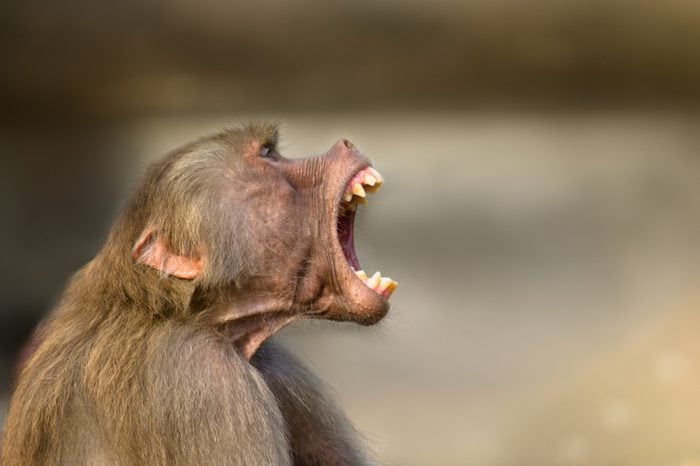
Monkey
Unless you work in a zoo or live in a country where monkeys roam free, chances are low that you’ll get bitten by any of the world’s 260 species of monkey. Trust us when we say, that’s a good thing. A monkey bite can transmit rabies, a disease that can cause partial paralysis, hallucinations, and, if untreated, death, according to the Centers for Disease Control (CDC). You could also contract Simian herpes, which can lead to encephalomyelitis—a sometimes-fatal brain inflammation whose symptoms the National Institute of Health outlines as including vomiting, vision loss, and paralysis. Don’t miss these innocent-looking animals that are surprisingly dangerous.
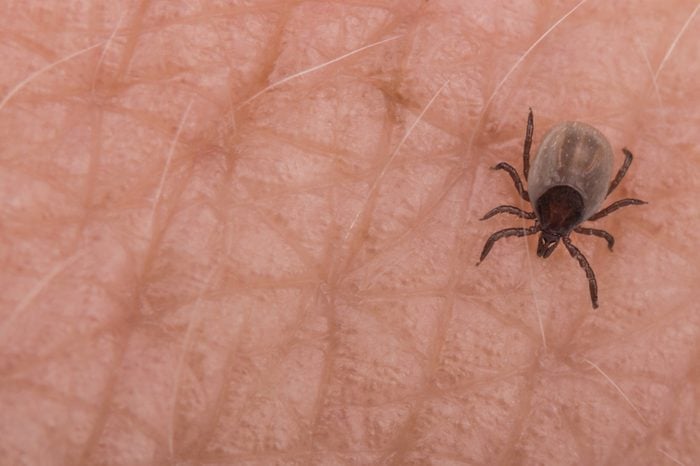
Tick
Tiny ticks—some no larger than the head of a pin—can carry all sorts of diseases, and every year more and more Americans become infected. Depending on where you live and which tick species are native to your region, this could result in anaplasmosis, babesiosis, Colorado tick fever, Lyme disease, Powassan encephalitis, Rocky Mountain Spotted Fever, Southern Tick-Associated Rash Illness, or Q fever, according to the CDC. These diseases trigger rashes and fever, fatigue and pain, skin ulcers and neurologic problems—and some symptoms endure for years.
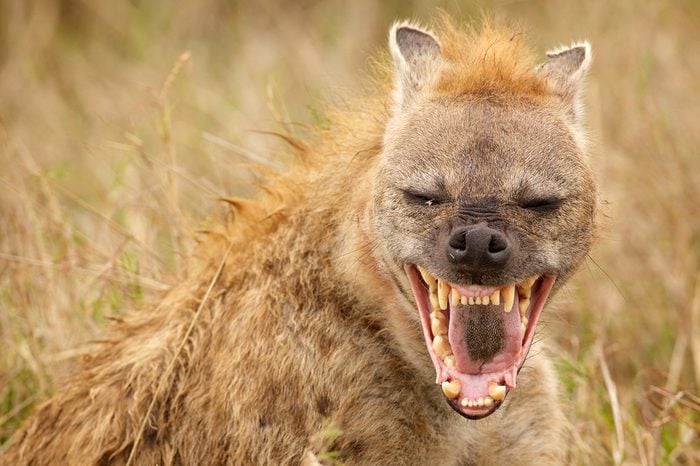
Spotted hyena
An animal with one of the most powerful bites around—it has a force of around 1,000 pounds per square inch—the spotted hyena has teeth and jaws so ferociously strong they can crush bone. According to the World Journal of Emergency Surgery, hyenas generally attack the faces, necks, and cervical spine regions of their victims, where their powerful bites can inflict damage to soft tissue and internal organs; one unlucky man had his scalp ripped from his head.
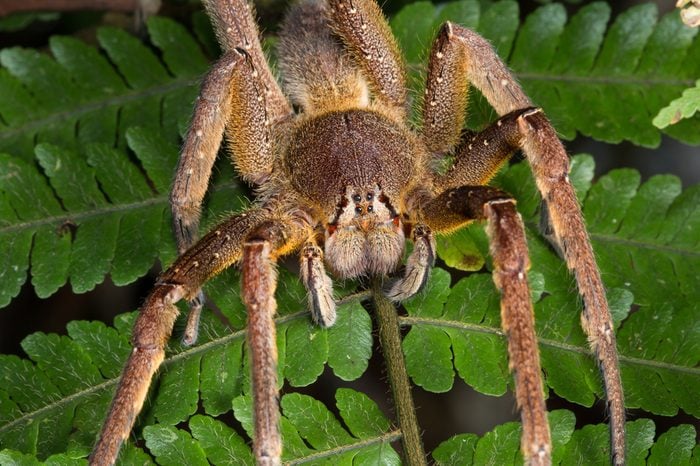
Brazilian wandering spider
Some animals’ bites aren’t dangerous because of their strength, but because of the venom they deliver when they clamp down on flesh with their fangs. That’s certainly the case with this large, fuzzy arachnid. The Independent calls poison the “most active neurotoxic venom [existing in] any living spider”; it destroys skin cells, causes breathing complications, triggers paralysis, and stops the heart, all en route to possible death. Although people rarely die from the bite, the spider’s genus name, Phoneutria, means “murderess” in Greek. Watch out for the 10 most dangerous bugs this summer.
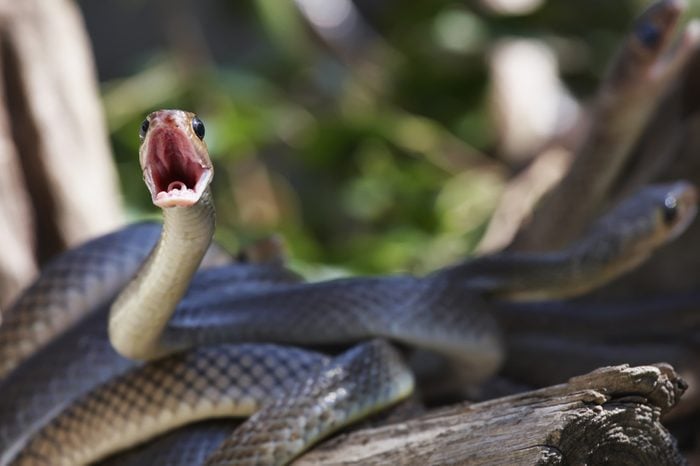
Brown snake
These earth-colored reptiles are responsible for the most snakebite deaths in Australia—23 out of the total 35 deaths between the years 2000 and 2016. The snake’s bite delivers a highly potent venom that toxicologist Geoff Isbister, MD, said in the Australian, leads to a rapid blood pressure drop, a cessation of blood clotting, and cardiac arrest that can occur within just minutes. As the majority of bites occur when people handle the snakes, these attacks can be considered highly preventable: Just letting sleeping snakes lie.
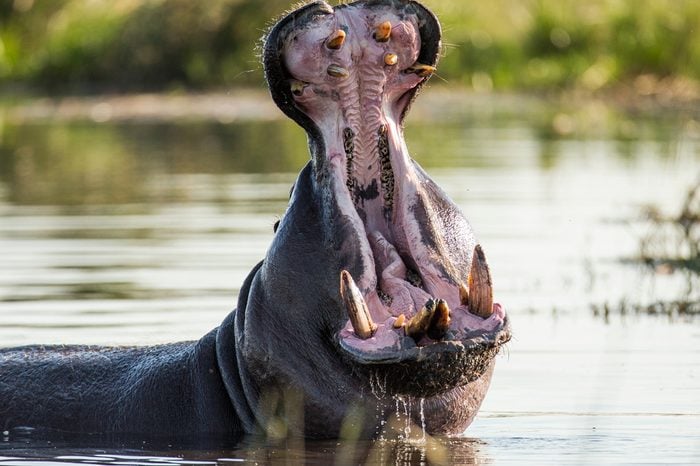
Hippo
“[M]any Africans regard hippos as the continent’s most dangerous animal,” reports Smithsonian Magazine. That’s thanks in part to a surly outlook and a bite strong enough to snap a person’s head off—literally. These enormous pachyderms have a bite force of 2,000 pounds per square inch and mouths that yawn open to 180 degrees. One victim of a hippo’s foot-long teeth lost an arm and came away from the encounter with “a wound so savage my lung was visible,” he told the Daily News.
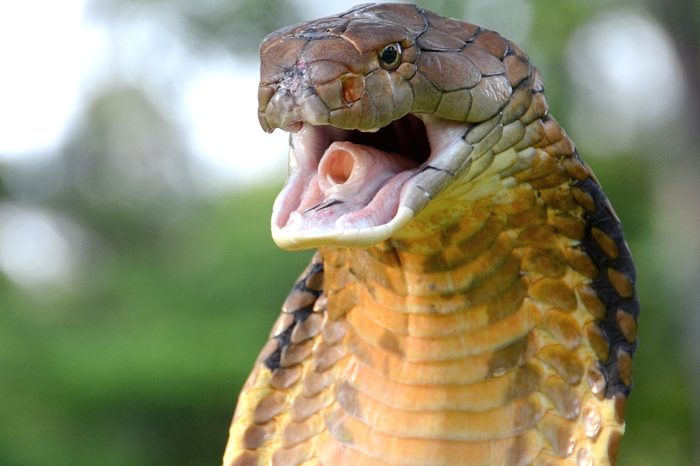
King cobra
“The bite of the King Cobra… can be rapidly fatal (as early as 30 minutes),” reports the University of California at San Diego in its toxicology report on this large, dangerous snake native to Southeast Asia. It delivers a massive quantity of venom in one bite—up to two-tenths of a fluid ounce, which is enough to kill 20 people. This causes an unpleasant variety of symptoms including paralysis, convulsions, vomiting, and respiratory and renal failure. The effects can be counteracted by antivenom if it’s administered quickly enough. Find out the 22 animals that are deadlier than sharks.
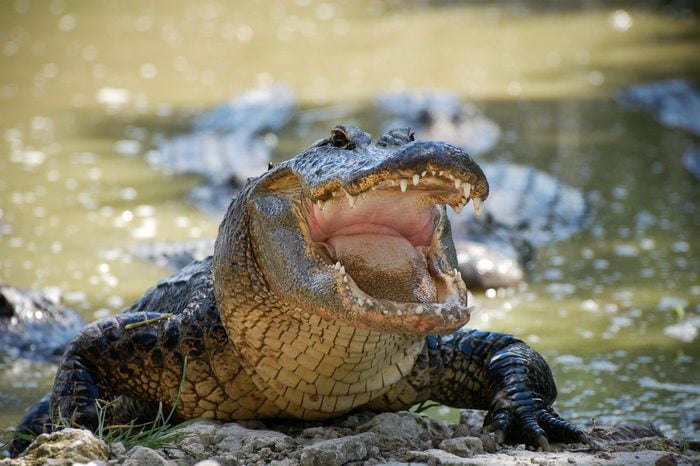
American alligator
Strong enough to crack a turtle’s shell, an alligator has up to 80 sharp teeth that both hold prey and tear it into easily consumable pieces, according to the Smithsonian’s National Zoo. Death is usually a given after an attack; those who survive find themselves battling dangerous infections, some from microorganisms believed to be transmitted from the feces of the alligator’s previous victim.
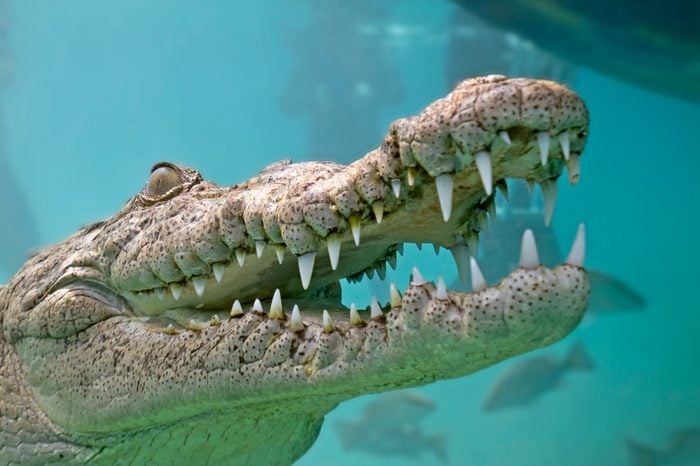
Saltwater crocodile
The winner of the most powerful bite award goes to the saltwater crocodile, according to a study conducted by scientists at Florida State University. Contrary to popular belief, it’s neither the size of the teeth nor the length of the snout that accounts for this force, but the vicious snapping action enabled by the muscles that bring a crocodile’s jaws together with a force of 3,700 pounds per square inch. Human croc-bite victims rarely survive the experience.
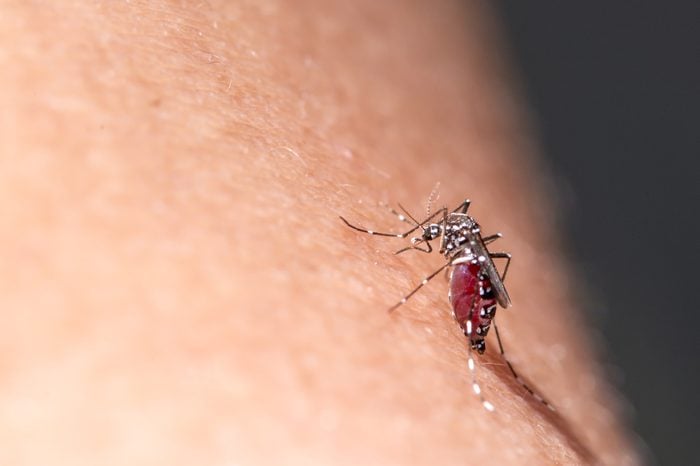
Mosquito
A mosquito takes a bite so small you might not even notice it. Which is why it’s incredible that experts consider this insect to be the world’s deadliest animal. That’s because its bite can transmit a variety of dangerous diseases to humans: More than 400,000 people die every year of malaria alone, according to the Barcelona Institute for Global Health. But as the World Health Organization points out, the pests also deliver chikungunya, dengue, yellow fever, Japanese encephalitis, and Zika virus. The suffering these insects inflict with their bites has devastating effects on millions of people worldwide. Now, find out about the 14 “harmless” bugs you didn’t know could bite you.




















